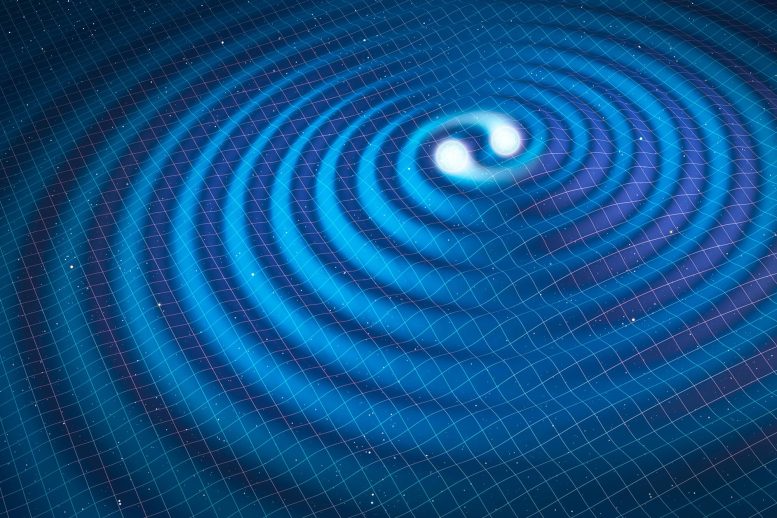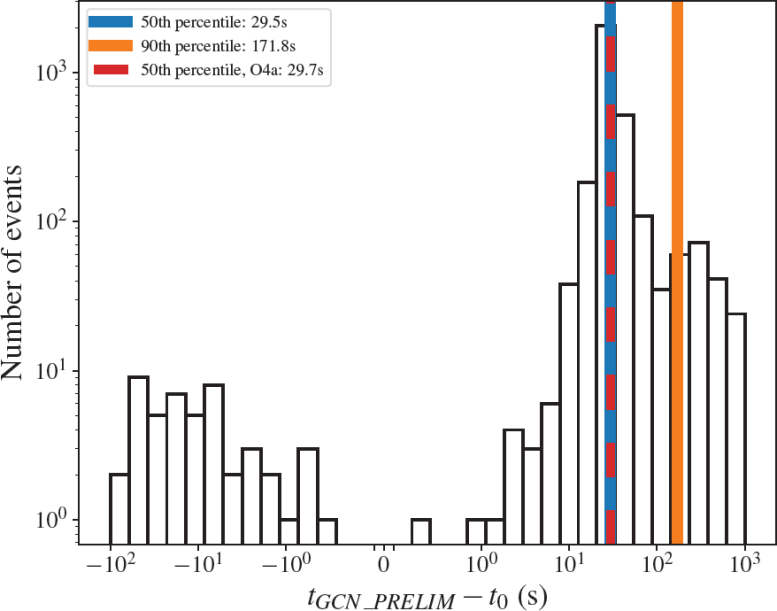
A new study will improve the detection of gravitational waves—ripples in space and time. Scientists at the University of Minnesota Twin Cities College of Science and Engineering co-led the research with an international team.
The research aims to send alerts to astronomers and astrophysicists within 30 seconds after the detection, helping to improve the understanding of neutron stars and black holes and how heavy elements, including gold and uranium, are produced.
The findings were recently published in the Proceedings of the National Academy of Sciences of the United States of America (PNAS), a peer-reviewed, open access, scientific journal.
Gravitational Wave Detection Technology
Gravitational waves interact with spacetime by compressing it in one direction while stretching it in the perpendicular direction. That is why current state-of-the-art gravitational wave detectors are L-shaped and measure the relative lengths of the laser using interferometry, a measurement method that looks at the interference patterns produced by the combination of two light sources. Detecting gravitational waves requires measuring the length of the laser to precise measurements: equivalent to measuring the distance to the nearest star, around four light years away, down to the width of a human hair.

Enhancements in Gravitational Wave Detection
This research is part of the LIGO-Virgo-KAGRA (LVK) Collaboration, a network of gravitational wave interferometers across the world.
In the latest simulation campaign, data was used from previous observation periods and simulated gravitational wave signals were added to show the performance of the software and equipment upgrades. The software can detect the shape of signals, track how the signal behaves, and estimate what masses are included in the event, like neutron stars or black holes. Neutron stars are the smallest, most dense stars known to exist and are formed when massive stars explode in supernovas.
Real-time Alerts and Observational Advances
Once this software detects a gravitational wave signal, it sends out alerts to subscribers, which usually include astronomers or astrophysicists, to communicate where the signal was located in the sky. With the upgrades in this observing period, scientists are able to send alerts faster, under 30 seconds, after the detection of a gravitational wave.
“With this software, we can detect the gravitational wave from neutron star collisions that is normally too faint to see unless we know exactly where to look,” said Andrew Toivonen, a Ph.D. student in the University of Minnesota Twin Cities School of Physics and Astronomy. “Detecting the gravitational waves first will help locate the collision and help astronomers and astrophysicists to complete further research.”
Astronomers and astrophysicists could use this information to understand how neutron stars behave, study nuclear reactions between neutron stars and black holes colliding, and how heavy elements, including gold and uranium, are produced.
This is the fourth observing run using the Laser Interferometer Gravitational-Wave Observatory (LIGO), and it will observe through February 2025. In between the last three observing periods, scientists have made improvements to the detection of signals. After this observing run ends, researchers will continue to look at the data and make further improvements with the goal of sending out alerts even faster.
Reference: “Low-latency gravitational wave alert products and their performance at the time of the fourth LIGO-Virgo-KAGRA observing run” by Sushant Sharma Chaudhary, Andrew Toivonen, Gaurav Waratkar, Geoffrey Mo, Deep Chatterjee, Sarah Antier, Patrick Brockill, Michael W. Coughlin, Reed Essick, Shaon Ghosh, Soichiro Morisaki, Pratyusava Baral, Amanda Baylor, Naresh Adhikari, Patrick Brady, Gareth Cabourn Davies, Tito Dal Canton, Marco Cavaglia, Jolien Creighton, Sunil Choudhary, Yu-Kuang Chu, Patrick Clearwater, Luke Davis, Thomas Dent, Marco Drago, Becca Ewing, Patrick Godwin, Weichangfeng Guo, Chad Hanna, Rachael Huxford, Ian Harry, Erik Katsavounidis, Manoj Kovalam, Alvin K.Y. Li, Ryan Magee, Ethan Marx, Duncan Meacher, Cody Messick, Xan Morice-Atkinson, Alexander Pace, Roberto De Pietri, Brandon Piotrzkowski, Soumen Roy, Surabhi Sachdev, Leo P. Singer, Divya Singh, Marek Szczepanczyk, Daniel Tang, Max Trevor, Leo Tsukada, Verónica Villa-Ortega, Linqing Wen and Daniel Wysocki, 23 April 2024, Proceedings of the National Academy of Sciences.
DOI: 10.1073/pnas.2316474121
The multi-institutional paper included Michael Coughlin, Assistant Professor for the School of Physics and Astronomy at the University of Minnesota in addition to Toivonen.
LIGO is funded by the National Science Foundation, and operated by Caltech and MIT. More than 1,200 scientists and some 100 institutions from around the world participate in the effort through the LIGO Scientific Collaboration.